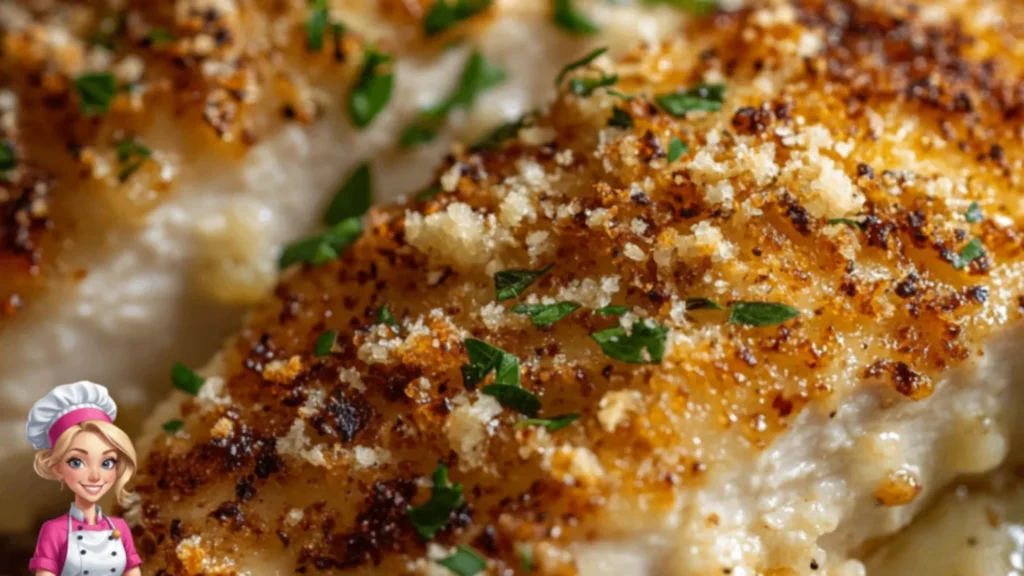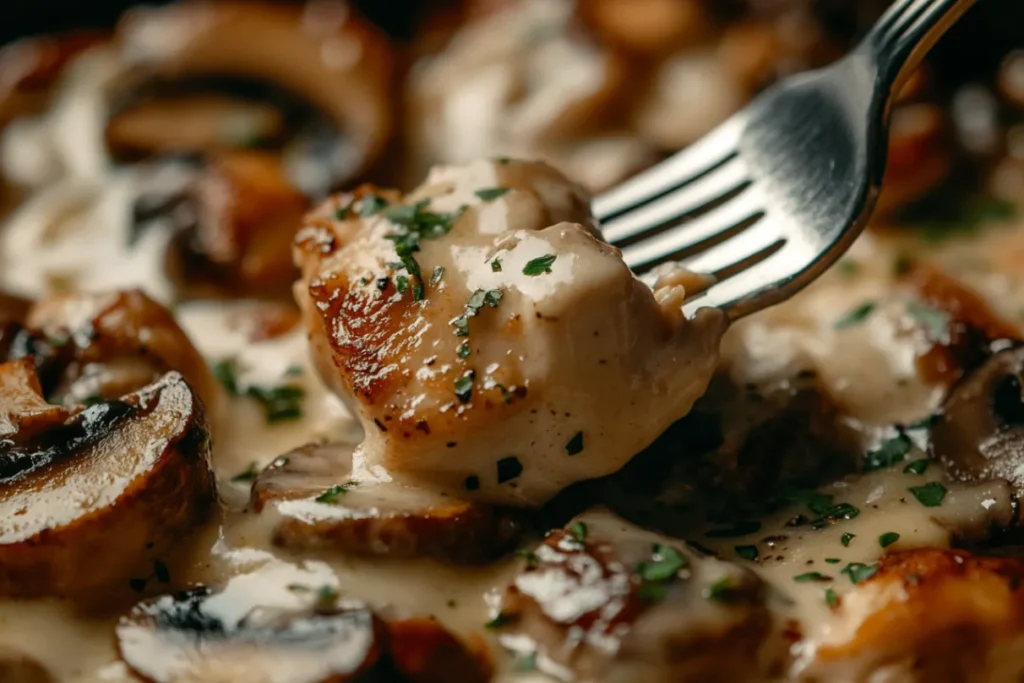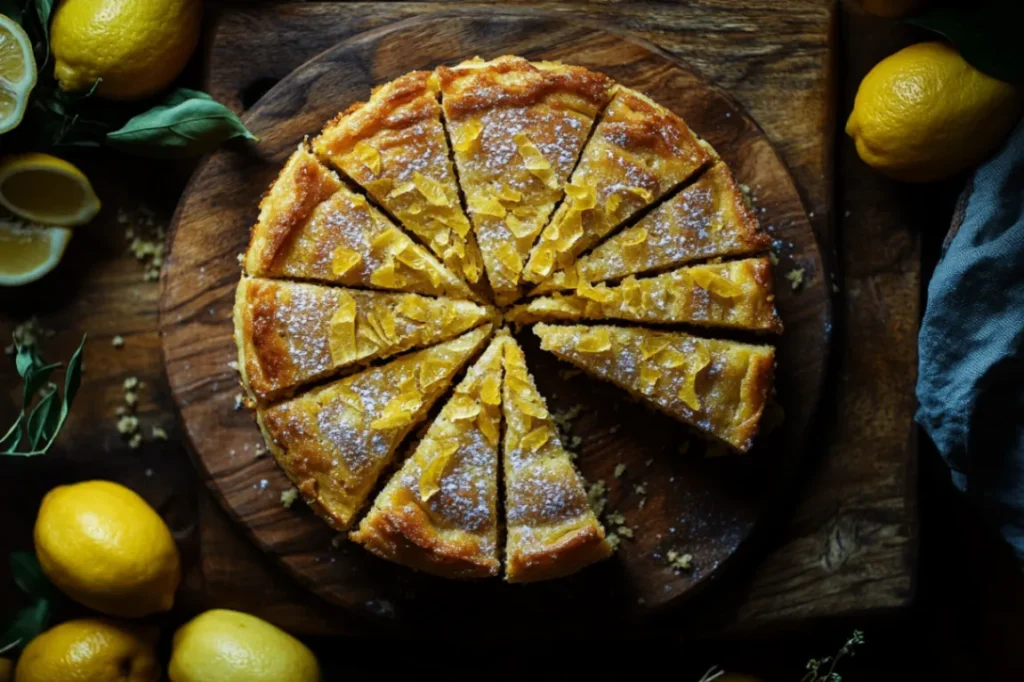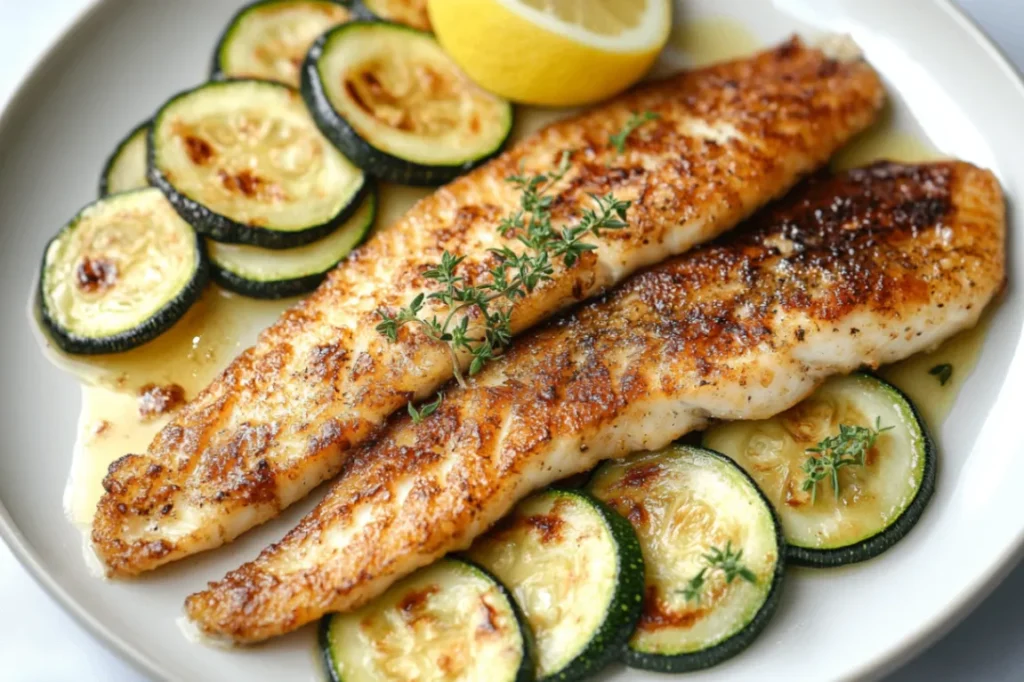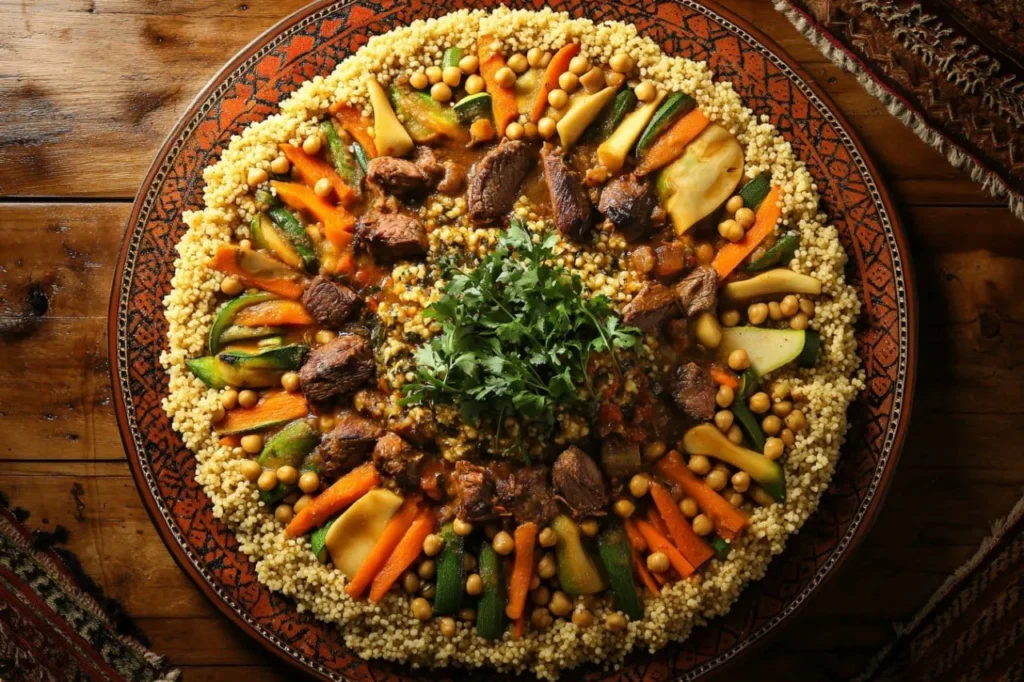
Table of Contents
Introduction
There’s something magical that happens when the aroma of Tunisian couscous with lamb fills your kitchen – it’s like being transported straight to the bustling souks of Tunis, where spices dance in the air and tradition lives in every grain. I’m Jowel, and this particular recipe holds a special place in my heart because it was the first dish that truly taught me the art of patience in cooking.
I remember the first time I attempted this Tunisian couscous with lamb – it was a complete disaster! The couscous was clumpy, the lamb tough, and the vegetables overcooked. But my Tunisian neighbor, Fatima, took pity on me and spent an entire afternoon teaching me the secrets passed down through generations of her family. Today, I’m sharing those same time-honored techniques with you, so you can create this masterpiece without the trial and error I went through.
This isn’t just another easy homemade recipe – it’s a journey into North African culinary heritage that transforms simple ingredients into something extraordinary. The Tunisian couscous with lamb represents the perfect harmony of tender meat, fluffy semolina, and vibrant vegetables, all brought together with a symphony of spices that will make your taste buds sing. Whether you’re looking to expand your repertoire of family favorite recipes or searching for how to make Tunisian couscous with lamb authentically, this guide will walk you through every step with the confidence of someone who’s made this delicious dish countless times.
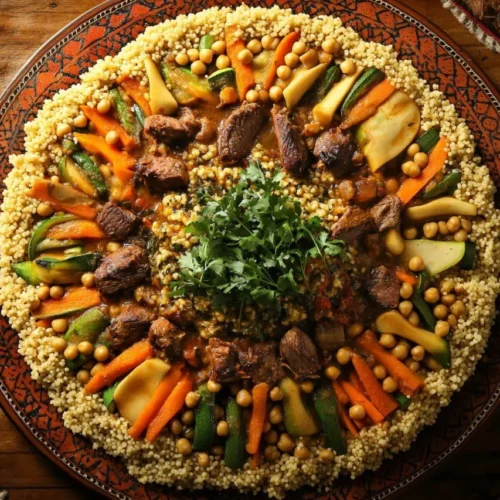
Authentic Tunisian Couscous With Lamb
Ingredients
- 2 lbs lamb shoulder cut into chunks
- 2 cups traditional medium-grain couscous
- 1 cup dried chickpeas soaked overnight
- 2 carrots peeled and chopped
- 2 turnips peeled and chopped
- 2 zucchinis chopped
- 2 onions diced
- 3 cloves garlic minced
- 1 tbsp ras el hanout
- 2 tbsp tomato paste
- 2 preserved lemons chopped
- Salt and black pepper to taste
- Olive oil
- Fresh cilantro and mint for garnish
Essential Ingredients for Authentic Tunisian Couscous With Lamb
Understanding the Heart of Tunisian Couscous With Lamb
The beauty of Tunisian couscous with lamb lies in its carefully balanced ingredients, each playing a crucial role in creating the final masterpiece. At the foundation, we have medium-grain couscous – not the instant variety you might find in regular supermarkets, but the traditional semolina pearls that require proper steaming. This couscous forms the canvas upon which all other flavors will paint their story.
The lamb itself should be cut from the shoulder or leg, providing the perfect balance of meat and fat that will render down during the long, slow cooking process. You’ll need about 2 pounds of lamb, cut into generous chunks that will become fork-tender after hours of gentle braising. The bone-in pieces are particularly prized because they release collagen during cooking, creating a rich, gelatinous broth that coats every grain of couscous.
For the vegetable medley, traditional Tunisian couscous with lamb includes carrots, turnips, zucchini, and chickpeas. These aren’t just random additions – each vegetable contributes its own texture and sweetness to balance the richness of the lamb. The chickpeas, preferably dried and soaked overnight, add protein and a creamy texture that complements the meat beautifully.
Selecting Premium Quality Ingredients
When shopping for your Tunisian couscous with lamb ingredients, quality makes all the difference between a good dish and an unforgettable one. For the lamb, seek out meat from a trusted butcher who can tell you about the animal’s diet and age. The meat should be deep red with white fat that feels firm to the touch. Avoid any pieces with an ammonia smell or slimy texture – fresh lamb should smell clean and slightly sweet.
The couscous itself deserves special attention. Look for brands from North Africa or France, where couscous-making is an art form. The grains should be uniform in size and pale golden in color. Avoid pre-seasoned varieties for this recipe – we want to build the flavors from scratch using traditional spices like harissa, ras el hanout, and preserved lemons.

For vegetables, choose specimens that are firm and vibrant. Carrots should snap crisply, turnips should feel heavy for their size, and zucchini should have glossy, unblemished skin. The preserved lemons, a cornerstone of North African cuisine, can be found in Middle Eastern markets or made at home if you plan ahead – they add an irreplaceable tangy, floral note that dried lemon zest simply cannot replicate.
Smart Substitutions and Alternatives
While authenticity is beautiful, cooking should also be accessible and adaptable to what you have available. If lamb isn’t in your budget or preference, beef chuck roast cut into chunks makes an excellent substitute for Tunisian couscous with lamb, though you’ll need to adjust the cooking time slightly. Chicken thighs, bone-in and skin-on, also work wonderfully and cook faster than red meat.
For those following dietary restrictions, this easy homemade recipe can be adapted beautifully. Vegetarians can substitute the lamb with large chunks of butternut squash, eggplant, and extra chickpeas, creating a hearty and satisfying version that honors the spirit of the dish. The key is maintaining the long, slow cooking process that allows flavors to meld and intensify.
If preserved lemons prove elusive, you can create a substitute by combining the zest of two lemons with a tablespoon of coarse salt, letting it sit for 30 minutes before using. While not identical, this provides the necessary citrus punch. Similarly, if ras el hanout spice blend isn’t available, create your own by combining cumin, coriander, cinnamon, paprika, and a pinch of rose petals – it won’t be traditional, but it will be delicious.
Mastering the Preparation of Tunisian Couscous With Lamb
Initial Preparation and Setup Secrets
The secret to perfect Tunisian couscous with lamb begins long before you light the stove. This isn’t a rushed weeknight dinner – it’s a meditative process that rewards patience and attention to detail. Start by soaking your dried chickpeas the night before, as this ensures they’ll cook evenly alongside the lamb without becoming mushy or remaining stubbornly hard.
Prepare your workspace like a professional chef by setting up all ingredients within arm’s reach. This French technique called “mise en place” is particularly crucial for this recipe because once the cooking begins, you’ll need to monitor and adjust continuously. Cut all vegetables to uniform sizes – chunks about 2 inches square work perfectly, allowing them to cook through without disintegrating.
The lamb requires special attention during prep. Pat each piece completely dry with paper towels, then season generously with salt and let it sit at room temperature for at least 30 minutes. This process, called dry-brining, allows the salt to penetrate the meat while the surface moisture evaporates, ensuring you’ll achieve a beautiful sear that locks in flavors. Meanwhile, toast your whole spices in a dry pan until fragrant – this simple step amplifies their potency exponentially.
Step-by-Step Cooking Instructions With Secret Tips
Now comes the heart of creating perfect Tunisian couscous with lamb. Heat a heavy-bottomed pot or traditional couscoussier over medium-high heat and add a splash of olive oil. When the oil shimmers, sear the lamb pieces in batches, never overcrowding the pan. This isn’t just about browning – you’re building the foundation of flavor through the Maillard reaction. Each piece should develop a deep, caramelized crust before turning.
Once all lamb is seared, reduce heat to medium and add diced onions to the same pot. Here’s a secret many miss: don’t clean the pot between steps. Those brown bits (called fond) are liquid gold that will dissolve into your braising liquid, adding incredible depth to your Tunisian couscous with lamb. Cook the onions until translucent, then add garlic, ginger, and your spice blend, stirring constantly for about a minute until the kitchen fills with aromatic perfume.
Return the lamb to the pot and add enough hot broth to cover by about an inch. Bring to a gentle simmer, then reduce heat to low and cover. This is where patience becomes your greatest ally – the lamb needs to braise slowly for about 1.5 to 2 hours until fork-tender. Add the soaked chickpeas during the last hour of cooking, and the vegetables during the final 30 minutes. The timing ensures everything finishes simultaneously without any component becoming overcooked.
Common Mistakes and How to Avoid Them
Even experienced cooks can stumble when making Tunisian couscous with lamb, but knowing the common pitfalls helps you navigate successfully. The biggest mistake is rushing the cooking process. I’ve seen home cooks increase the heat to speed things up, only to end up with tough, chewy lamb and mushy vegetables. Low and slow isn’t just a suggestion – it’s the golden rule for this delicious dish.
Another frequent error involves the couscous itself. Many people treat it like rice, boiling it in water, but traditional couscous requires steaming. If you don’t have a couscoussier, improvise with a fine-mesh strainer that fits snugly over your pot. The couscous should steam above the simmering stew, absorbing the aromatic vapors while cooking to fluffy perfection. Stir it occasionally with a fork to prevent clumping.
Seasoning mistakes can also derail your efforts. Tunisian cuisine relies on building layers of flavor throughout the cooking process, not just at the end. Taste and adjust constantly – the stew should be well-seasoned at every stage. Don’t forget that the preserved lemons and harissa should be added in the final 15 minutes to preserve their bright, complex flavors. Adding them too early causes their distinctive characteristics to cook away, leaving you with a muddy, indistinct taste.
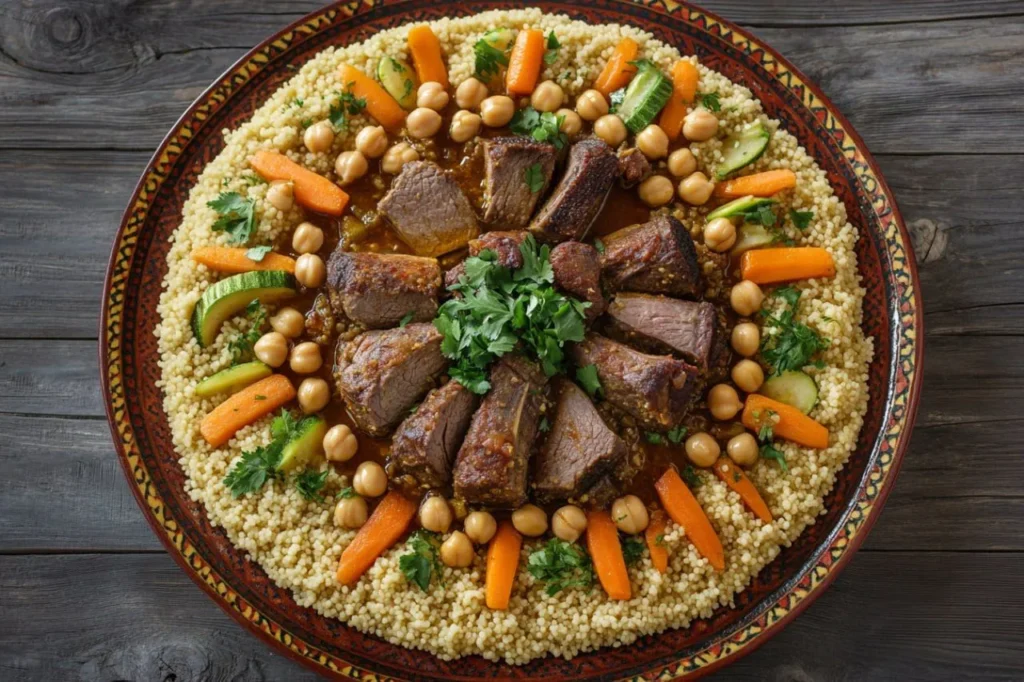
Serving and Perfecting Your Tunisian Couscous With Lamb
Creative Presentation Ideas That Wow
The presentation of Tunisian couscous with lamb is as important as its preparation – this is a dish meant to be shared and celebrated. Traditionally, the couscous is mounded high on a large, shallow platter, creating a golden pyramid that serves as the centerpiece. Arrange the tender lamb pieces around the base of the couscous mountain, then artfully distribute the colorful vegetables – the orange carrots, white turnips, and green zucchini create a beautiful rainbow against the neutral couscous backdrop.
For a more modern presentation that still honors tradition, consider individual serving bowls. Place a generous scoop of fluffy couscous in each bowl, then create a well in the center where you’ll nestle pieces of lamb and vegetables. Ladle the aromatic broth around the edges, allowing it to soak into the couscous gradually. This method ensures each person gets an equal portion of all components while maintaining the visual appeal.
Don’t forget the finishing touches that transform good Tunisian couscous with lamb into something spectacular. A sprinkle of fresh cilantro and mint adds color and freshness, while a drizzle of your best olive oil provides richness and sheen. Serve small bowls of harissa on the side, allowing guests to adjust the heat level to their preference. Some chopped almonds or pine nuts add textural interest and authentic North African flair.
Perfect Pairings and Side Dishes
While Tunisian couscous with lamb is a complete meal in itself, thoughtful accompaniments can elevate the dining experience. Start the meal with traditional Tunisian appetizers like brik pastries filled with egg and tuna, or a simple salad of tomatoes, cucumbers, and onions dressed with olive oil and vinegar. These light starters prepare the palate for the rich main course without overwhelming it.
For beverages, consider serving Tunisian mint tea, which aids digestion and provides a refreshing counterpoint to the rich lamb. If you prefer wine, choose something with enough body to stand up to the bold flavors – a Côtes du Rhône or Spanish Tempranillo works beautifully. The tannins in red wine complement the fatty richness of the lamb while the fruit notes echo the sweetness of the braised vegetables.
Bread plays an important role in the Tunisian dining experience, serving both as an accompaniment and as a utensil for scooping up the delicious stew. Serve warm pita or, if you can find it, traditional Tunisian bread called khubz. The slightly sour flavor and chewy texture provide the perfect vehicle for soaking up every drop of the flavorful broth that makes this such a memorable family favorite recipe.
Storage and Reheating for Maximum Flavor
One of the beautiful aspects of Tunisian couscous with lamb is that it often tastes even better the next day, as the flavors continue to meld and develop. Store the components separately when possible – keep the couscous in one container and the stew in another. This prevents the couscous from becoming soggy while maintaining the integrity of both elements.
The lamb stew keeps beautifully in the refrigerator for up to four days, and actually improves with time as the spices penetrate deeper into the meat and vegetables. When reheating, do so gently over low heat, adding a splash of broth or water if the consistency has thickened too much. The key is warming it slowly to preserve the tender texture of the lamb and vegetables.
For the couscous, reheating requires a gentle touch. Place it in a steamer or fine-mesh strainer over simmering water, covering it with a clean kitchen towel, then a lid. Steam for about 10 minutes, fluffing occasionally with a fork. This method restores the light, fluffy texture without making it gummy or sticky. If you’re in a hurry, you can microwave it with a tablespoon of water, covered, but steaming produces superior results.
 DINNER
DINNER LUNCH
LUNCH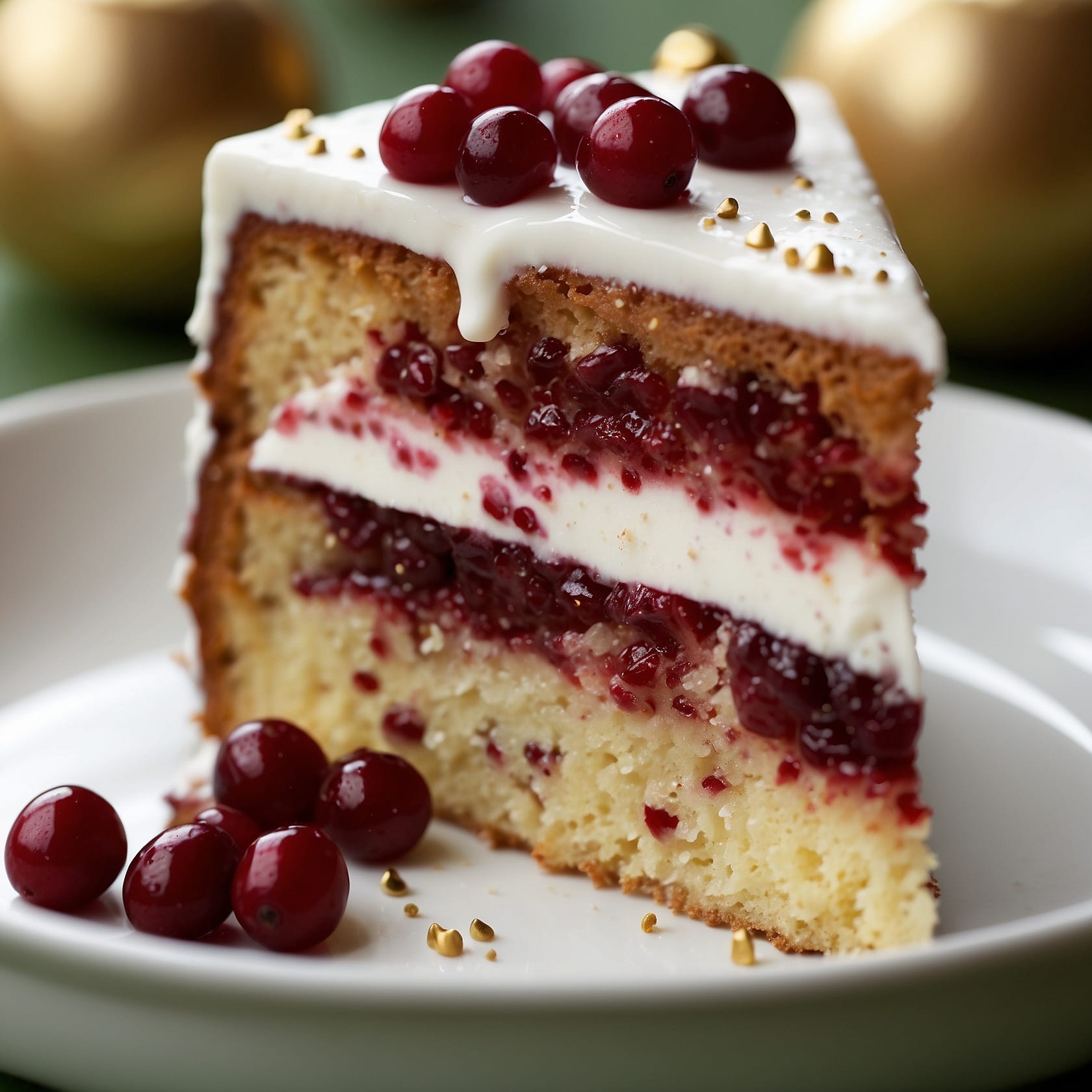 CAKE
CAKE BREAKFAST
BREAKFASTFor more amazing recipes, be sure to check out our other sections to explore a variety of ideas that will enrich your cooking experience. Each section offers its own unique flavors to ensure a delightful culinary journey:
- Easy and Quick Recipes: A collection of dishes that guarantee delicious meals with minimal effort and time.
- Healthy Recipes: Discover healthy and delicious options that fit your lifestyle.
- Desserts: A diverse selection of sweets that will add a special touch of sweetness to your table.
- Lunch Recipes: Tasty lunch ideas that you can easily prepare to delight your family.
- Dinner Recipes: Delicious and easy-to-make recipes that will make your dinner a memorable occasion.
Frequently Asked Questions About Tunisian Couscous With Lamb
Q: How long does it take to make authentic Tunisian couscous with lamb from start to finish?
A: Plan for about 3-4 hours total, though most of that is passive cooking time. The active preparation takes about 45 minutes, while the lamb braises slowly for 2-2.5 hours. This isn’t a quick weeknight meal, but rather a weekend project that rewards you with incredible flavors and enough leftovers for several meals. The beauty of this easy homemade recipe is that once everything is in the pot, you can relax while it cooks itself.
Q: Can I make Tunisian couscous with lamb in a slow cooker or pressure cooker?
A: Absolutely! For a slow cooker, sear the lamb first in a pan, then transfer everything to your slow cooker and cook on low for 6-8 hours. For pressure cooking, reduce the liquid by half and cook under high pressure for 45 minutes with natural release. While these methods sacrifice some traditional technique, they produce delicious results and make this family favorite recipe more accessible for busy schedules.
Q: What’s the difference between regular couscous and the type used for Tunisian couscous with lamb?
A: Traditional North African couscous is made from semolina wheat and requires steaming, not boiling. It has larger grains than the instant variety and a more complex, nutty flavor. The steaming process creates light, fluffy grains that absorb flavors beautifully. If you can only find instant couscous, it will work in a pinch, but the texture and taste won’t be quite as authentic.
Q: How spicy should authentic Tunisian couscous with lamb be?
A: Traditional Tunisian couscous with lamb has a moderate heat level – warm and aromatic rather than fiery. The spice comes primarily from harissa paste, which you can adjust to taste. Start with a small amount and add more as needed. Remember, you can always add heat, but you can’t take it away. The goal is to enhance the lamb and vegetables, not overpower them.
Q: Can I prepare any components of this dish ahead of time?
A: Yes! This delicious dish is perfect for advance preparation. You can braise the lamb and vegetables up to two days ahead, which actually improves the flavor. The couscous is best prepared fresh, but you can steam it in the morning and reheat it gently before serving. Many Tunisian families prepare the stew base in large batches and freeze portions for quick weeknight dinners paired with freshly steamed couscous.
Embrace the Magic of Tunisian Couscous With Lamb
As you embark on this culinary journey, remember that making Tunisian couscous with lamb is about more than just following a recipe – it’s about connecting with centuries of tradition and creating memories around your dinner table. This dish has the power to transform an ordinary evening into something special, bringing family and friends together over steaming bowls of comfort and joy.
The beauty of this easy homemade recipe lies not just in its incredible flavors, but in its ability to adapt to your kitchen, your schedule, and your preferences while maintaining its authentic soul. Each time you make it, you’ll discover new nuances and develop your own techniques, making it truly your own while honoring its North African heritage.
I encourage you to embrace the process, be patient with yourself as you learn, and most importantly, share this delicious dish with people you care about. Take photos of your creation, experiment with the spice levels, and don’t be afraid to make it your own. When you do, I’d love to hear about your experience – did you discover any new tricks? Did your family declare it their new favorite? These stories of kitchen success and family joy are what make cooking such a beautiful part of our lives.
So gather your ingredients, clear your afternoon, and prepare to fill your home with the incredible aromas of authentic Tunisian couscous with lamb. Your taste buds – and your loved ones – will thank you for this delicious adventure into North African cuisine.


